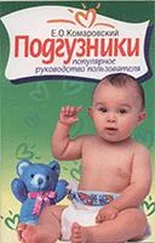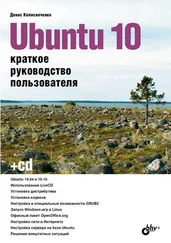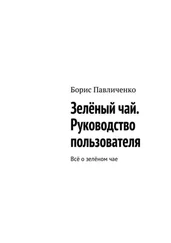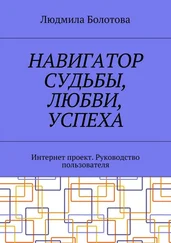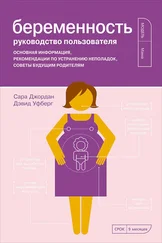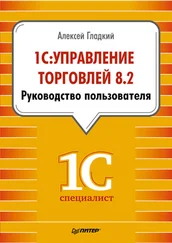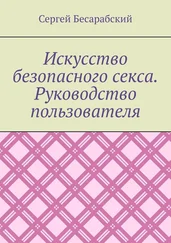T. M. Kolb, J. Lichy, and J. H. Newhouse, “Comparison of the Performance of Screening Mammography, Physical Examination, and Breast U. S. and Evaluation of Factors that Influence Them: An Analysis of 27,825 Patient Evaluations,” Radiology 225, no. 1 (2002): 165–175.
N. F. Boyd et al., “Quantitative Classification of Mammographic Densities and Breast Cancer Risk: Results from the Canadian National Breast Screening Study,” Journal of the National Cancer Institute 87, no. 9 (May 1995): 670–675; R. M. Tamimi et al., “Endogenous Hormone Levels, Mammographic Density, and Subsequent Risk of Breast Cancer in Postmenopausal Women,” Journal of the National Cancer Institute 99, no. 15 (August 2007): 1178–1187.
J. A. Knight et al., “Macronutrient Intake and Change in Mammographic Density at Menopause: Results from a Randomized Trial,” Cancer Epidemiology, Biomarkers and Prevention 8, no. 2 (February 1999): 123–128; G. A. Greendale et al., “Effects of Estrogen and Estrogen-progestin on Mammographic Parenchymal Density. Postmenopausal Estrogen/Progestin Interventions (PEPI) Investigators,” Annals of Internal Medicine 130, no. 4 (February 1999): 262–269.
G. Ursin et al., “Can Mammographic Densities Predict Effects of Tamoxifen on the Breast?” Journal of the National Cancer Institute 88, no. 2 (January 1996): 128–129.
A. McTiernan et al., “Estrogen-Plus-Progestin Use and Mammographic Density in Postmenopausal Women: Women’s Health Initiative Randomized Trial,” Journal of the National Cancer Institute 97, no. 18 (2005): 1366–1376.
J. Cuzick et al., “Tamoxifen-Induced Reduction in Mammographic Density and Breast Cancer Risk Reduction: A Nested Case-Control Study,” Journal of the National Cancer Institute 103, no. 9 (2011): 744–752.
K. A. Ely et al., “Core Biopsy of The Breast with Atypical Ductal Hyperplasia. A Probabilistic Approach to Reporting,” American Journal of Surgical Pathology 25, no. 8 (August 2001): 1017–1021.
“Consensus Guideline on Concordance Assessment of Image-Guided Breast Biopsies and Management of Borderline or High-Risk Lesions,” The American Society of Breast Surgeons, открыто 9 сентября 2017 года, https://www.breastsurgeons.org/new_layout/about/statements/PDF_Statements/Concordance_and_High%20RiskLesions.pdf; M. Morrow, S. J. Schnitt, and L. Norton, “Reviews: Current Management of Lesions Associated with an Increased Risk of Breast Cancer,” National Review of Clinical Oncology 12 (2015): 227–238.
M. Guray and A. A. Sahin, “Benign Breast Disease s: Classification, Diagnosis, and Management,” The Oncologist 11, no. 5 (2006): 435–449; R. A. Jensen et al., “Invasive Breast Cancer Risk in Women with Sclerosing Adenosis,” Cancer 64, no. 10 (1989): 1977–1783. M. Guray and A. A. Sahin, “Benign Breast Disease s: Classification, Diagnosis, and Management,” The Oncologist 11, no. 5 (2006): 435–449; R. A. Jensen et al., “Invasive Breast Cancer Risk in Women with Sclerosing Adenosis,” Cancer 64, no. 10 (1989): 1977–1783; M. Guray and A. A. Sahin, “Benign Breast Disease s: Classification, Diagnosis, and Management,” The Oncologist 11, no. 5 (2006): 435–449.
B. Fisher et al., “Tamoxifen for Prevention of Breast Cancer: Report of the National Surgical Adjuvant Breast and Bowel Project P-1 Study,” Journal of the National Cancer Institute 90, no. 18 (September 1998): 1371–1388.
N. Houssami et al., “The Association of Surgical Margins and Local Recurrence in Women with Early-Stage Invasive Breast Cancer Treated with Breast-Conserving Therapy: A Meta-analysis,” Annals of Surgical Oncology 21, no. 3 (2014): 717–730.
R. E. Curtis et al., New Malignancies among Cancer Survivors: SEER Cancer Registries, 1973–2000 (Bethesda, MD: National Cancer Institute, 2006).
R. E. Curtis et al., “New Malignancies Following Breast Cancer,” in New Malignancies among Cancer Survivors: SEER Cancer Registries, 1973–2000 (Bethesda, MD: National Cancer Institute, 2006).
“Familial Breast Cancer: Collaborative Reanalysis of Individual Data from 52 Epidemiological Studies Including 58,209 Women with Breast Cancer and 101,986 Women without the Disease,” The Lancet 358, no. 9291 (2001): 1389–1399.
K. A. Metcalfe et al., “Breast Cancer Risks in Women with a Family History of Breast or Ovarian Cancer Who Have Tested Negative for a BRCA1 or BRCA2 Mutation,” British Journal of Cancer 100, no. 2 (2009): 421.
B. N. Peshkin, M. L. Alabek, and C. Isaacs, “BRCA 1/2 Mutations and Triple Negative Breast Cancers,” Breast Disease 32, no. 1–2 (2011): 25–33.
“Prevalence and Penetrance of BRCA1 and BRCA2 Mutations in a Population Based Series of Breast Cancer Cases. Anglian Breast Cancer Study Group,” British Journal of Cancer 83, no. 10 (2000): 1301–1308; V. A. Moyer, “Risk Assessment, Genetic Counseling, and Genetic Testing for BRCA-Related Cancer in Women: US Preventive Services Task Force Recommendation Statement,” Annals of Internal Medicine 160, no. 4 (February 2014): 271–281.
N. Petrucelli, M. B. Daly, and T. Pal, “BRCA1 and BRCA2 associated Hereditary Breast and Ovarian Cancer,” GeneReviews (September 1998).
S. Chen and G. Parmigiani, “Meta-analysis of BRCA1 and BRCA2 Penetrance,” Journal of Clinical Oncology 25, no. 11 (April 2007): 1329–1333.
B. N. Peshkin, M. L. Alabek, and C. Isaacs, “BRCA 1/2 Mutations and Triple Negative Breast Cancers,” Breast Disease 32, nos. 1–2 (2011): 25–33.
K. Metcalfe et al. “Contralateral Breast Cancer in BRCA1 and BRCA2 Mutation Carriers,” Journal of Clinical Oncology 22, no. 12 (June 2004): 2328–2335.
S. Panchal et al., “Does Family History Predict the Age at Onset of New Breast Cancers in BRCA1 and BRCA2 Mutation‐Positive Families?” Clinical Genetics 77, no. 3 (2010): 273–279.
E. Mocci et al., “Risk of Pancreatic Cancer in Breast Cancer Families from The Breast Cancer Family Registry, Cancer Epidemiology, Biomarkers and Prevention 22, no. 5 (May 2013): 803–811.
D. Easton et al., “Cancer Risks in BRCA2 Mutation Carriers.” Journal of the National Cancer Institute 91, no. 15 (August 1999): 1310–1316.
A. Liede, B. Y. Karlan, and S. A. Narod, “Cancer Risks for Male Carriers of Germline Mutations in BRCA1 or BRCA2: A Review of the Literature.” Journal of Clinical Oncology 22, no. 4 (February 2004): 735–742.
D. Easton et al., “Cancer Risks in BRCA2 Mutation Carriers,” Journal of the National Cancer Institute 91, no. 15 (August 1999): 1310–1316.
L. Castéra et al., “Next-generation Sequencing for the Diagnosis of Hereditary Breast and Ovarian Cancer Using Genomic Capture Targeting Multiple Candidate Genes,” European Journal of Human Genetics 22, no. 11 (2014): 1305.
Читать дальше
![Кристи Фанк Грудь. Руководство пользователя [litres] обложка книги](/books/392018/kristi-fank-grud-rukovodstvo-polzovatelya-litre-cover.webp)

